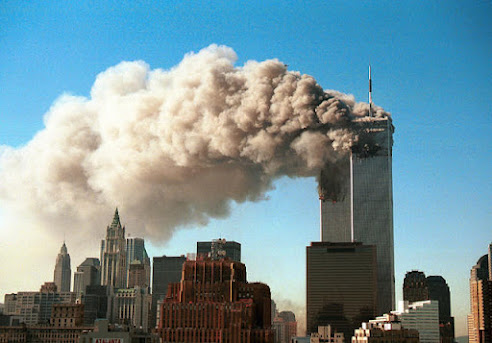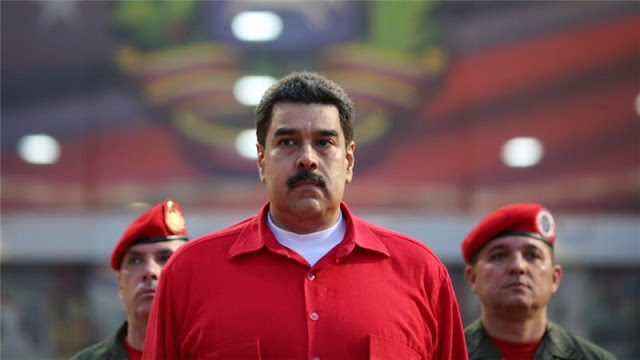CENTURY'S QUARTER OF WOES
I recall that fateful Tuesday morning of September, 11 2001. The sun seemed to have risen earlier than usual as though it was preparing for something special, its resplendence brimming with radiance over all, with a little air of expectancy for the unknown. I was out, rope skipping, headed for the 500th count when my phone started to ring. At first, I couldn’t take the call as I was just very close to my target. The phone refused to be ignored until such a time it became a distraction I had to attend to. I interrupted my exercise, paused my count to take the call. And there was Mitchell, my friend at the other end. “Judie,” she called out, “turn on the news”. In over ten years of knowing her, Mitchell had never sounded so tearful. Cold shivers ran down my spine for deep down I knew all could not be well. I immediately turned on my phone and the internet was streaming with live videos of the tragic event. It was a harvest of catastrophe. The second tower had been hit. Plumes of smoke rose to the heavens like the sacrifice of Abel, untainted. As I stood speechless, staring at my phone, balls of tears ran down my chick like the precious oil on the head, running down the beard of Aaron. My mind wandered aimlessly trying to come to terms with the reality I was beholding. I thought for one moment of the great calamity that had befallen humanity and wondered how long a time it would take for the day to break over this long night of sorrow and darkness.
Seven years on, the global financial crises took the world’s centre stage, the most serious financial crises since the Great Depression of 1929. In what was known as Global Economic Meltdown, Financial institutions around the world suffered severe damage. The 2008 financial crisis was a result of cheap credit (low-interest rate) and loose lending standards that caused the prices of houses in the U.S and elsewhere to fall by 15.9%. There was also the problem of rapid development in the financial products of low-income earners which signs were largely ignored by policy makers around the world. By the time this meltdown had taken its toll, many people had lost their jobs, savings and homes. A medical journal, The Lancet, found that the economic crises of 2008-2010 and the rise in unemployment that accompanied it, was likely linked to around 260,000 excess cancer-related deaths among the 35 states of the Organization for Economic Development (OECD) alone. Governments around the world rose to the occasion by providing bailout packages to financial institutions and manufacturing companies to keep them afloat.
Just as the world tried to make a recovery, another crisis struck and this time, a pandemic called Covid-19, an illness caused by a novel Corona Virus called Severe Acute Respiratory Syndrome Coronavirus 2 (SARS-CoV-2). First identified in Wuhan City, Hubei Province, China in 2019, the pandemic ravaged through the globe leaving a trail of death and destruction behind, forcing nations and countries to introduce partial or total lockdown in order to limit infections and death toll from the pandemic. This caused supply chains to be cut and prices of food stuffs, essential goods and services to skyrocket. With interest rate raised to sustain the economy, inflation set in. Governments around the world waded into the crises by making money available for their citizens to help them stay alive while staying at home. From 2019 to September 2022, over six million lives have been lost to this virus (worldometers.info) with the United States, India and France suffering the most casualties.
The invasion of Ukraine by Russian on the 24 February, 2022 is yet another chapter in the first quarter of this century’s book of woes. This time, Europe got stuck in the war between Russia and Ukraine. Following sanctions from the West, the Russian President, Vladimir Putin cut off supply chain of gas to some “unfriendly neighbors”. This action caused the prices of fossil products and essential commodities to rise. The cost of this invasion is no doubt high. It threw the world into short supply of grain since the world’s largest grain producer, Ukraine was at war. The high price of fossil products forced much of Russian European neighbors into high inflation where they were backed into a corner and were faced with unfavorable option of hiking their interest rates. The invasion also led to Europe’s largest refugee crisis since World War II. The office of the United Nations High Commissioner for Human Rights (OHCHR) verified that a total of 5,827 civilian deaths had occurred over a seven month old period (February to September, 2022) of Russian invasion of Ukraine (statista.com)
CONCLUSION
The sole victim of these tales of woes is man. Each crisis brings him sorrow and reduces his population. In just about a quarter of a century, more than 7 million persons are feared dead by largely unnatural causes. The world seems busy, and everyone seems to be in a hurry. To where? I do not know. Humanity is besieged. Our lovely world is dying and it appears help is not forthcoming. The pages of the book of the first quarter of the 21st century may never find a place in Guinness Hall of Fame not because we do not have a story but because ours is the story of a century’s quarter of woes.




Comments
Post a Comment